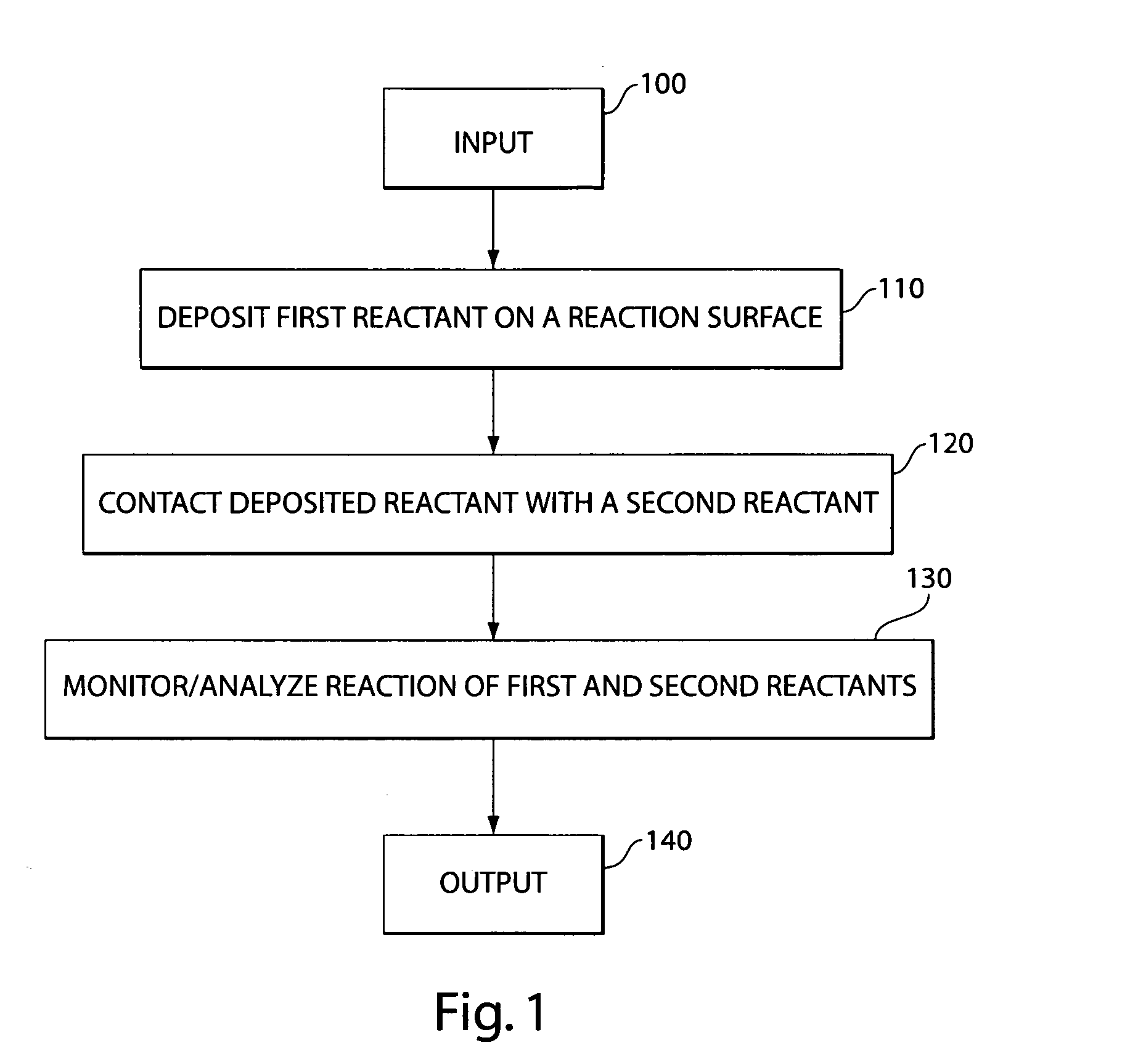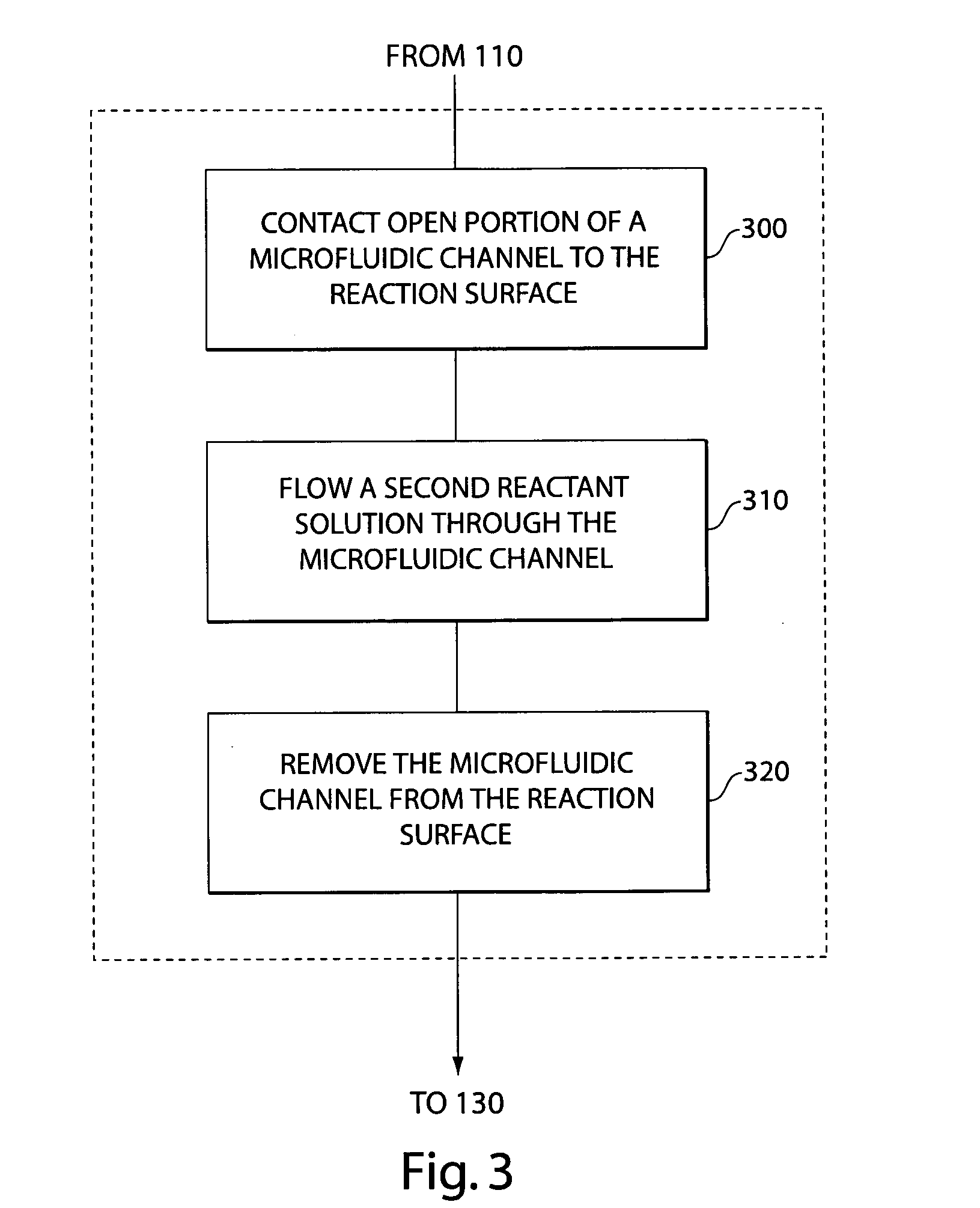High-density reaction chambers and methods of use
- Summary
- Abstract
- Description
- Claims
- Application Information
AI Technical Summary
Benefits of technology
Problems solved by technology
Method used
Image
Examples
example 1
Parallel Lines of DNA on a Glass Slide
[0293]FIG. 18 shows an embodiment where an array of microchannels was used to immobilize DNA into parallel lines on a glass slide. The round spots at the top of the image are wells or inlets where individual DNA samples were introduced to the array of microchannels. These wells are fluidically attached to channels that direct the DNA along the glass slide, where it is immobilized. The array of microchannels was then removed, and the slide was exposed to cyber green dye to make the lines of DNA visible. While these lines are approximately 50 microns in width, in other embodiments, they may be as small as 10 microns in width or smaller.
example 2
Matrix of Hybridization Reactions
[0294]FIG. 20 shows a micrograph of a 96-channel microfluidic device that was used in the experiments described below. Fluid inlet ports 73 are shown (these ports are through holes that are in communication with the upper surface). Each microchannel 54 is 50 microns wide (these are on the lower surface). The device was first placed on a glass slide with the channels oriented vertically. Sample DNA was then allowed to flow through a selected number of channels for less than a minute before it was removed from the channels. The device then was removed from the slide. The slide then was treated to bond the sample DNA to the glass slide, followed by blocking to prevent any other DNA from adhering to it. The same microfluidic device was again applied to the glass slide with the channels oriented horizontally. Selected channels were then filled with labeled probe DNA, and the assembly was allowed to incubate for 12 hours. Subsequently, the microfluidic de...
example 3
Reuse of Patient Samples for New Targets
[0297] The arrays of the invention allow for sequential assays to be performed on sample DNA that has been attached to a reaction surface. Reuse of sample DNA provides two significant advantages: a) the cost of sample preparation can be spread over many uses, and b) the sample can be probed for new targets that were not contemplated when the DNA sample was originally prepared. According to the invention, samples deposited on a reaction surface can be conserved for tests to be performed at a future date.
[0298] In preferred embodiments of the invention, whole genome amplifications are performed and the resulting DNA samples are deposited on the reaction surface. As a result, all targets contained in the genome are potentially available. Therefore, once the DNA on the reaction surface has been exposed to channels of a first set of hybridization probes, other targets are still available for future hybridization assays.
[0299] Once a hybridizatio...
PUM
| Property | Measurement | Unit |
|---|---|---|
| Length | aaaaa | aaaaa |
| Length | aaaaa | aaaaa |
| Thickness | aaaaa | aaaaa |
Abstract
Description
Claims
Application Information
 Login to View More
Login to View More - R&D
- Intellectual Property
- Life Sciences
- Materials
- Tech Scout
- Unparalleled Data Quality
- Higher Quality Content
- 60% Fewer Hallucinations
Browse by: Latest US Patents, China's latest patents, Technical Efficacy Thesaurus, Application Domain, Technology Topic, Popular Technical Reports.
© 2025 PatSnap. All rights reserved.Legal|Privacy policy|Modern Slavery Act Transparency Statement|Sitemap|About US| Contact US: help@patsnap.com



